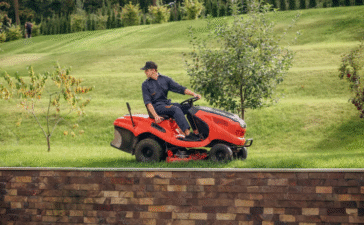You reached for a bottle of weed killer with the best intentions: to rid your lawn of pesky invaders and create a lush, green carpet of grass. Instead, you’re now staring at patches of brown, yellow, and wilting turf. It’s a frustrating and surprisingly common problem. The good news is that a lawn damaged by herbicide isn’t always a lost cause. Understanding what went wrong is the first step toward effective lawn repair. This guide will walk you through why killed lawn with weed killer can harm your grass, how to identify the damage, and the precise steps for lawn restoration. With the right approach, you can revive your lawn and prevent this from happening again.
What Causes Lawn Damage from Weed Killer?
Not all weed killers are created equal, and using the wrong one or using the right one incorrectly is often the root of the problem. Understanding the different types is crucial for effective weed control and lawn safety.
Understanding Herbicide Types
Herbicides are broadly categorized into two groups: selective and non-selective. Selective herbicides are formulated to target specific types of plants, like broadleaf weeds (dandelions, clover), while leaving grass unharmed. When used correctly, they are a lawn’s best friend.
On the other hand, non-selective herbicides are designed to kill any plant they come into contact with. Products containing glyphosate, like Roundup, are powerful non-selective options. They are excellent for clearing large areas of unwanted vegetation, such as a gravel driveway or a garden bed before planting, but they will kill your grass just as effectively as they kill weeds.
How Weed Killers Harm Grass
Herbicides work by disrupting essential plant processes. Some inhibit photosynthesis, while others interfere with cell growth or root system development. When a non-selective herbicide is applied to your lawn, it doesn’t distinguish between a dandelion and a blade of Kentucky bluegrass. The chemicals are absorbed, typically through the leaves, and translocate throughout the plant, leading to its death. This is known as phytotoxicity. Even selective herbicides can cause damage if misapplied, leading to a condition called lawn recovery from herbicide toxicity.
Common Mistakes with Herbicide Application
Most lawn damage from weed killers stems from human error. Applying a non-selective product by mistake is a frequent culprit. Another common mistake is overapplication. Using more than the recommended amount of even a lawn-safe, selective herbicide can overwhelm and damage your grass.
Weather conditions also play a significant role. Applying herbicides on a hot, sunny day can intensify the chemical reaction, causing burns on your grass. Similarly, windy conditions can cause “spray drift,” where the herbicide is carried to unintended areas of your lawn or garden, causing widespread damage.
Signs Your Lawn Has Been Killed by Weed Killer
It’s important to correctly diagnose the problem before starting any treatment. The signs of lawn damage from weed killer can sometimes mimic other issues, like drought stress or fungal diseases.
Brown or Yellow Patches
One of the most telling signs of herbicide damage is the appearance of distinct brown or yellow patches. These areas often have sharp, unnatural-looking borders that correspond to where the chemical was sprayed. This is different from the gradual, more diffuse browning you might see with drought or disease.
Uneven Growth and Wilting
Shortly after application, you might notice the affected grass starting to wilt or look stressed. The growth may become uneven, with some parts of the lawn appearing healthy while others look sick. The grass blades may curl, twist, or show other signs of distress as the herbicide takes effect.
Dead Grass and Weed-Free Areas
The ultimate sign is a patch of completely dead grass where, ironically, there are no weeds. If you see a barren area that is perfectly weed-free but also grass-free, it’s a strong indicator that a non-selective herbicide was used.
Can Your Lawn Be Saved?
Seeing your green lawn turn brown is disheartening, but it’s time to assess the situation. The path to reviving a lawn killed by herbicide depends on the extent of the damage.
Is Your Lawn Completely Dead?
To determine if recovery is possible, perform a simple “tug test.” Gently pull on a handful of the affected grass. If the blades pull out easily with no resistance and the roots are mushy or non-existent, that section is likely dead. However, if the grass holds firm and you can see healthy white roots and a solid crown at the base of the plant, there is a good chance it can recover.
Timeframe for Lawn Recovery
The recovery timeline depends on the type of herbicide used, the severity of the damage, and your restoration efforts. For minor damage from a selective herbicide, your lawn might recover in a few weeks with proper care. For significant damage from a non-selective herbicide where replanting is necessary, it could take several months to a full growing season to see a fully restored lawn.
Signs of Lawn Revival After Damage
As your lawn begins to recover, you’ll start to see new, green shoots emerging from the base of the damaged plants. The brown or yellow blades will gradually be replaced by healthy new growth. If you have reseeded, the first sign of success will be the germination of new grass seedlings across the treated area.
Steps to Restore a Lawn Killed by Weed Killer
Once you’ve assessed the damage, it’s time to take action. This weed killer lawn repair process requires patience and a systematic approach.
Immediate Actions to Take
The first thing to do is to water the lawn thoroughly. A deep watering can help dilute the chemical in the soil and wash it off any surviving grass blades, reducing further absorption. Water the affected area for 20-30 minutes immediately, and continue to water deeply every few days for a week. During this recovery period, avoid applying any other chemicals, including fertilizers or fungicides, as this can add more stress to the already weakened grass.
Replanting Grass
If you’ve determined that sections of your lawn are completely dead, you’ll need to replant. The timing for this is critical. Some herbicides have a residual effect in the soil that can prevent new seeds from germinating. Check the product label for its specific waiting period; it can range from a few weeks to several months.
Once it’s safe, prepare the area by raking away the dead grass and debris to expose the soil. For the best results, consider overseeding the lawn after weed killer damage. Loosen the top inch of soil and spread a high-quality grass seed appropriate for your climate and sun exposure. Lightly rake the seeds into the soil and cover them with a thin layer of topsoil or compost to protect them.
Fertilization and Lawn Care
Once your new grass has started to grow or your existing grass shows signs of revival, you can help stimulate growth with the right fertilizer. Choose a starter fertilizer that is high in phosphorus to promote strong root development. Follow the package instructions carefully to avoid over-fertilizing.
Proper mowing and watering are essential during recovery. Mow at a higher setting to encourage deep root growth and help the grass blades produce the energy they need. Water deeply and infrequently to encourage roots to grow down into the soil, making the lawn more resilient.
You would also like: “dewalt lawn mower“
Preventing Future Lawn Damage from Herbicides
Lawn restoration is a lot of work. The best strategy is to prevent damage from happening in the first place by adopting safe practices.
Proper Herbicide Use
Always read and follow the label instructions on any herbicide product. The label provides critical information on the correct mixing ratios, application methods, and safety precautions. Use a sprayer that is dedicated only to herbicides to avoid accidental contamination. Pay close attention to the weather forecast and avoid applying chemicals on hot, windy, or rainy days.
Alternatives to Chemical Weed Killers
Consider exploring organic alternatives to weed killers for managing small weed problems. Pulling weeds by hand is often the most effective and safest method. For isolated weeds, you can use boiling water or a solution of horticultural vinegar. To limit weed growth proactively, apply a thick layer of mulch in garden beds and ensure your lawn is properly aerated to reduce soil compaction.
Lawn Care Best Practices
The most effective form of weed control is a healthy, dense lawn. A thick turf naturally crowds out weeds and prevents them from establishing. Maintain healthy soil by testing its pH and amending it as needed. Follow a regular schedule of fertilization, proper watering, and mowing to create a strong, weed-resistant lawn.
Your Path to a Greener Lawn
Accidentally damaging your lawn with weed killer is a setback, but it offers a valuable lesson in lawn care. By understanding the causes of the damage, you can take informed steps to restore your turf and implement practices that prevent future issues. With patience and the right techniques, you can guide your lawn back to health and achieve the beautiful, green landscape you originally envisioned.
Frequently Asked Questions
How long does it take for grass to grow back after being killed by weed killer?
The timeline varies. If the grass was only damaged, it might recover in 2-3 weeks with proper watering. If the grass was killed and you need to reseed, it will take at least 4-6 weeks to see significant new growth, and several months for the lawn to fully mature. Always check the herbicide label for the recommended waiting period before reseeding.
Will watering my lawn wash away weed killer?
Watering immediately and deeply after application can help dilute the weed killer on the plant surfaces and in the soil. This may reduce the severity of the damage but is unlikely to completely wash away a systemic herbicide that has already been absorbed by the plants.
Can I put new grass seed down after using weed killer?
You must wait. Many weed killers have residual soil activity that will prevent new seeds from germinating. The product label will specify how long you need to wait before planting new seed, which can range from a few weeks to several months.
What is the fastest way to fix a lawn killed by Roundup?
Roundup is a non-selective herbicide, so it will kill the grass completely. The fastest fix is to wait the recommended time on the label (usually 3-7 days), then rake away all the dead grass. Prepare the soil by aerating and adding a layer of topsoil or compost, then reseed the area. Keep the new seed consistently moist until it is well-established.
How do I know if my lawn is dead or dormant?
A dead lawn will have brown, brittle grass that pulls out easily, revealing no healthy roots. A dormant lawn, typically seen in extreme heat or cold, will still have a firm root system and a healthy crown at the base of the plant, even if the blades are brown. Dormant grass will revive with improved weather and watering, while dead grass will not.












